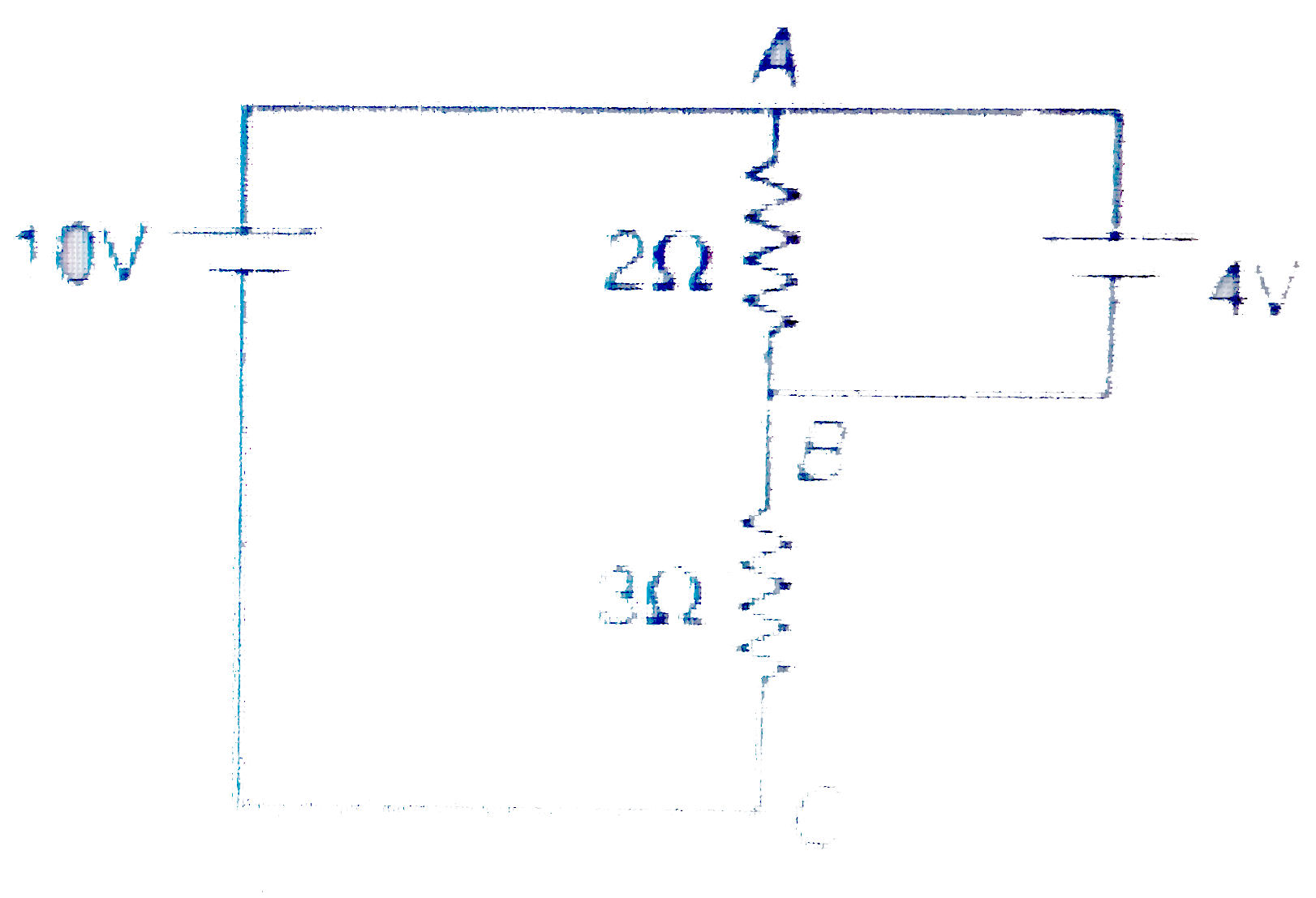A galvanometer has resistance 36Ω if a shunt of 4Ω is added with this, then fraction of current that passes through galvanometer is:
The correct Answer is:4
To solve the problem of finding the fraction of current that passes through the galvanometer when a shunt resistor is added, we can follow these steps:
Step 1: Identify the given values
- Resistance of the galvanometer, Rg=36Ω
- Resistance of the shunt, Rsh=4Ω
Step 2: Calculate the total resistance in parallel
When a shunt is connected in parallel with the galvanometer, the total resistance Rt can be calculated using the formula for resistors in parallel:
1Rt=1Rg+1Rsh
Substituting the values:
1Rt=136+14
Step 3: Find a common denominator and simplify
To add the fractions, find a common denominator:
1Rt=136+936=1036=518
Step 4: Calculate the total resistance Rt
Now, take the reciprocal to find Rt:
Rt=185Ω
Step 5: Determine the current through the galvanometer
Let I be the total current entering the parallel combination of the galvanometer and the shunt. The current through the galvanometer Ig can be calculated using the current division rule:
Ig=I⋅RshRg+Rsh
Substituting the values:
Ig=I⋅436+4=I⋅440=I⋅110
Step 6: Calculate the fraction of the current through the galvanometer
The fraction of the total current that passes through the galvanometer is given by:
Fraction=IgI=I⋅110I=110
Final Answer
The fraction of the current that passes through the galvanometer is:
110
---
- Resistance of the galvanometer, Rg=36Ω
- Resistance of the shunt, Rsh=4Ω
When a shunt is connected in parallel with the galvanometer, the total resistance Rt can be calculated using the formula for resistors in parallel:
1Rt=1Rg+1Rsh
1Rt=136+14
To add the fractions, find a common denominator:
1Rt=136+936=1036=518
Now, take the reciprocal to find Rt:
Rt=185Ω
Let I be the total current entering the parallel combination of the galvanometer and the shunt. The current through the galvanometer Ig can be calculated using the current division rule:
Ig=I⋅RshRg+Rsh
Ig=I⋅436+4=I⋅440=I⋅110
The fraction of the total current that passes through the galvanometer is given by:
Fraction=IgI=I⋅110I=110
The fraction of the current that passes through the galvanometer is:
110
Topper's Solved these Questions
- CURRENT ELECTRICITYBook:ALLENChapter:CURRENT ELECTRICITYExercise:EXERCISE-IV B
Explore 14 Videos
- CURRENT ELECTRICITYBook:ALLENChapter:CURRENT ELECTRICITYExercise:EXERCISE-V A
Explore 20 Videos
- CURRENT ELECTRICITYBook:ALLENChapter:CURRENT ELECTRICITYExercise:EXERCISE-III
Explore 26 Videos
- CIRCULAR MOTIONBook:ALLENChapter:CIRCULAR MOTIONExercise:EXERCISE (J-A)
Explore 6 Videos
- GEOMETRICAL OPTICSBook:ALLENChapter:GEOMETRICAL OPTICSExercise:subjective
Explore 14 Videos
Similar Questions
We have a galvanometer of resistance 25Ω. It is shunted by a 2.5Ω wire. The part of total current that flows through the galvanometer is given as
View SolutionA galvanometer has a resistance of 3663Ω. A shunt S is connected across it such that (1/34) of the total current passes through the galvanometer. Then the value of the shunt is
View Solution
Knowledge Check
If the galvanometer current is 10 mA, resistance of the galvanometer is 40Ω and shunt of 2Ω is connected to the galvanometer, the maximum current which can be measured by this ammeter is
A0.21AB2.1AC210AD21A
A galvanometer has a resistance of 3663Ω. A shunt S is connected across it such that (1/34) of the total current passes through the galvanometer. Then the value of the shunt is
View SolutionA galvanometer of resistance 20Ω is shunted by a 2Ω resistor. What part of the main current flows through the galvanometer ?
View SolutionA galvanometer has resistance 1Ω. Maximum deflection current through it is 0.1 A
View SolutionCurrent passing through 3Ω resistance is

View SolutionA moving coil galvanometer of resistance 100Ω is used as an ammeter using a resistance 0.1Ω. The maximum diflection current in the galvanometer is 100μA. Find the minimum current in the circuit so that the ammeter shows maximum deflection
View SolutionA galvanometer coil has a resistance of 50Ω and the meter shows full scale deflection for a current of 5 mA . This galvanometer is converted into a voltmeter of range 0 - 20 V by connecting
View SolutionA moving coil galvanometer has a resistance of 990Ω. in order to send only 10% of the main currect through this galvanometer, the resistance of the required shunt is
View Solution